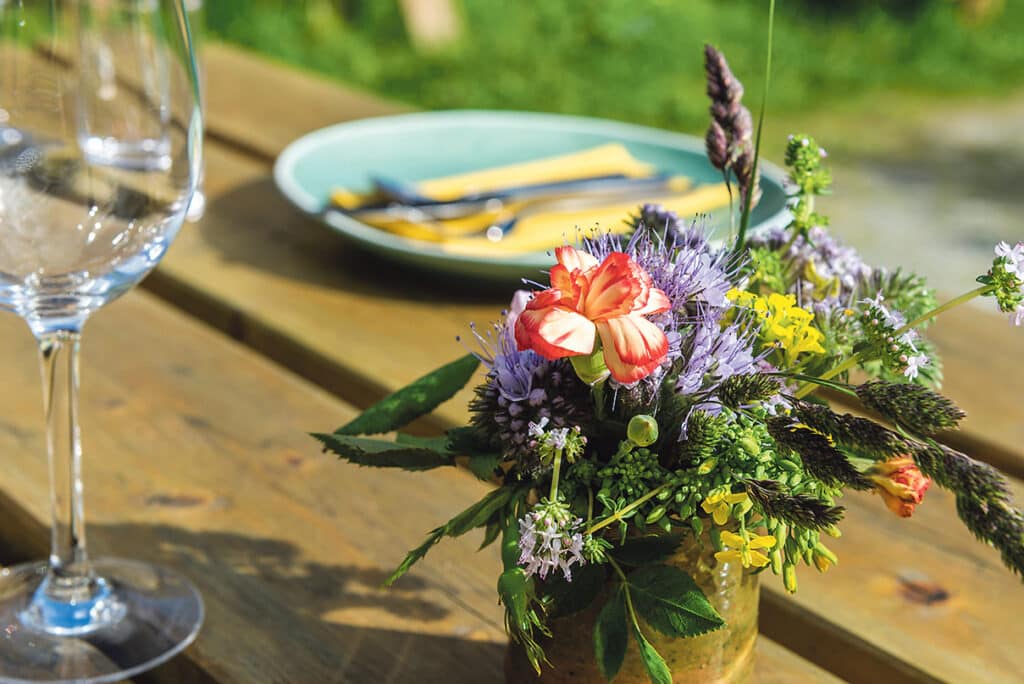
Berlin in early summer is full of Horse Chestnut trees in blossom. Some of the trees are immense – as tall as five storey buildings; and when the wind blows the pink blossoms come down like confetti, falling everywhere, sometimes landing into the glasses of the people drinking on the terraces and relaxing on river banks. It’s not drinking in a drunken way, just social. The weather has warmed up and everyone’s out. There are little bottle shops around the neighbourhoods, which sell a huge selection of beers, soft drinks and snacks and it’s perfectly acceptable to consume them pretty much anywhere. People drink beers and other people pick the bottles up and get the deposit back. It all works very well.
Amongst the selection of beers that are consumed are pink drinks: Rhubarb spritzers, lemonades and cocktails, all totally delicious. I checked out how to make rhubarb cordial – the base for all these confections, and I feel like I have discovered a perfect use for rhubarb.
We have a healthy rhubarb patch in our garden and each year, after our initial rhubarb tart enthusiasm, it ends up languishing unless I have jam making fit. Rhubarb cordial is easier to make than tarts, crumbles or jam, the only vaguely complicated part of the process is straining the mix. It can be poured directly through a sieve but I prefer to line the sieve with a piece of muslin. This ensures a beautiful clean pink juice, no stray bits of fruit and so on, which might sneak through a sieve. This is not a difficult step, although it may entail a trip to your local haberdasher to buy a piece of muslin.
The grandchildren love the pink lemonade – rhubarb cordial plus sparkling or tap water, in fact we all do and it’s fun to add to a favourite tipple especially served chilled.
Rhubarb Cordial
• 500g rhubarb (stems removed)
• 350mls water
• 350g sugar
• 1 orange, zest and juice
• 1 lemon, zest and juice
• 2 slices fresh ginger
• muslin
• string
Put the water and sugar into a pan. Bring to the boil then turn to a simmer. Wash the lemon and orange well then pare the peel of the fruits with a small knife or a vegetable peeler. A vegetable peeler works best, as it doesn’t cut through to the pith but if you don’t have suitable peeler just use a knife. Cut two or three slices of ginger, no need to peel. Put the lemon and orange peel and the pieces of ginger into the sugar syrup and continue to simmer. Wash the rhubarb well. Discard the leaves and the other end. There’s no need to peel especially, as you need the pink skin to colour the cordial. Cut the rhubarb into 1cm pieces, add to the sugar syrup and bring everything to the boil. Turn to a low simmer and cook for 25-30 minutes, until the rhubarb has disintegrated.
Leave to cool then strain using either of the following methods.
A) Just straining; Put a fine meshed sieve over a bowl that is large enough to collect the juice – without sitting in the juice as it strains. Pour the cooked rhubarb in and leave to strain for an hour – better a little longer if you have the patience. Don’t poke or squeeze otherwise the cordial will become cloudy
B) Using a piece of muslin to line the sieve; Cut a piece of muslin so that it’s large enough to sit in your sieve/colander and drape over the sides.
Organise somewhere to hang the muslin bag. I use an upside down stool but a large saucepan with a wooden spoon across the top to suspend the bag works too.
Wet the piece of muslin under the tap, then squeeze it out and drape it over the colander/sieve – wetting the cloth helps to keep it in place and encourages the juice to flow through, then pour in the cooked rhubarb.
Pull the four corners of the muslin together, then gather up so that the rhubarb is contained without squeezing and secure with a piece of string. The string needs to be long enough to tie onto the bars of the stool or the wooden spoon over the saucepan with the bag hanging above a bowl to collect the juice. Leave for an hour or longer if you’re not in a hurry.
This method gives maximum extraction, as the weight of the fruit pushes the juice through. Don’t squeeze the bag or the juice will become cloudy.
Put the finished cordial into clean bottles or a large jar and store in the fridge.
Perfect for sunny days!
Karen
Lettercollum Kitchen Project
22 Connolly Street
Clonakilty
www.lettercollum.ie
karen@lettercollum.ie



